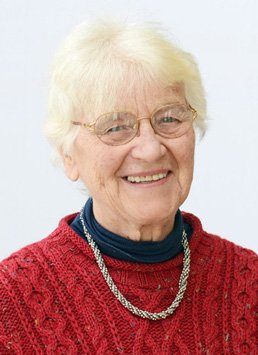Society for the Study of Women Philosophers, Inc.
a non-profit, tax-exempt educational charity 501(c)3 Internal Revenue Code
Anne Finch, Viscountess Conway
1631-1679
Metaphysics, Philosophy of Religion
|
Kate Lindemann's Women Philosophers pages |
 |
Remember!! Your purchase of books by clicking on Abe Books or Amazon links through this site earns us a small commission that is used to provide travel scholarships. |
NOTE: Anne Finch Conway should not be be confused with the poet of the same name who was Countess of Winchilsea
If you are shy and rather solitary. If you live with chronic pain or illness. If your older brother is offered the best schooling, you may find that the life of this philosopher offers real hope that you can not only do philosophy but that you can make a real contribution to the field.
Anne Conway not only wrote a critique of Cartesianism but she was a correspondent of Leibniz, who acknowledged her work. Some think that it was she who originated the concept of 'mondad".
Chronology
1631 She was born to Elizabeth Cradock Finch whose husband, Henege Finch , who was Speaker of the House of Commons, died early in the same month.
There was an elder brother, John, to whom Anne became greatly attached. At least one other brother is recorded but little is known of him. The family lived in Kensington and she was a rather solitary child. She was tutored at home and learned Latin. Later she acquired Greek and Hebrew.
1641-2 John Finch, her brother, attends at Balliol College and corresponds, sending her philosophical treatises to read.
1643 Anne Finch become quite ill with fever. She recovers but is plagued with severe headaches for the rest of her life.
1650 This year marks the first letters of her correspondence with Henry More. More was a well known Platonist of the day and he was her brother's tutor at Christ College. Henry More had corresponded with Descartes and he sends copies of some translations of Descartes' work. They discuss the work in their correspondence.
1651 She and Edward Conway marry on February 17 of this year. Her health problems require that she remain at home in Kensington - even when her husband travels.
1652 Henry More publishes An Antidote Against Atheism and dedicates it to Anne Finch Conway.
Her headaches continue and she tries numerous remedies. She even goes to France for special surgery where they were to bore holes in her head. Nothing seems to work.
1658 She give birth to a son, who is named for her deceased father, Heneage.
The friendship with Henry More continues. He and her brother John are frequent guests at her home.
1660 Her son Heneage Finch dies of smallpox. Anne Finch Conway contracted smallpox while caring for her son. She is very ill but recovers.
1665 The plague comes to England. Although she is spared, her headaches grow worse.
Edward Conway invites Valentine Greatrakes, an Irish healer who apparently cures people by laying on his hands, to come to see if he can help his wife. Greatrakes arrives in late January and Henry More with several notables come to witness the event. Greatrakes is able to cure a number of the servants but not Anne.
Some of the witnesses, Benjamin Whichcote and Robert Boyle attest to numerous healings and Ralph Cudworth give public acknowledgement that Greatrakes healed his son.
Francis Mercury van Helmont, son of a famous alchemist and friend of More, visits Ragley to investigate her illness. Her personality impresses him so much, he arranges to stay at Ragley regularly over the next 9 years and use it as his base with trips to other places. At first his treatments give Anne Finch Conway some relief but then the headaches return with even greater ferocity.
1675 Francis Mercury van Helmont begins to attend Quaker meetings. Lady Conway becomes intellectually curious about the Quaker beliefs. (She had previously investigated Lurianic Kabbala )
1677 She becomes a Quaker. Many Quakers, Including William Penn, Isaac Penington, and various Quaker women were frequent visitors at Ragley. At least one scholar believes that the stories of their suffering while in prison influenced Anne since she, herself, had suffered so much.
1679 On February 18, Lady Anne Finch Conway dies after long suffering,
1690 Anne Finch Conway's philosophical work, The Principles of the Most Ancient and Modern Philosophy, is published as a result of efforts by van Helmont and Henry More. It is believed that she wrote this work sometime between 1671 and 1677.
It should be noted that Anne Finch Conway also corresponded with Leibniz. He acknowledges her contributions to his thought. Some think that she may have been the person who originated 'monad.'
Works
Click on the link to purchase a copy:
The Principles of the Most Ancient and Modern Philosophy, published posthumously.
The Conway Letters: The Correspondence of Anne, Viscountess Conway, Henry More, and Their Friends, 1642-1684
Secondary sources.
There is an essay, "Anne Conway's Critique of Cartesian Dualism" by Louise D. Derksen at Anne Finch Conway and Descartes.
This page was updated January 10, 2015.
Society for the Study of Women Philosophers